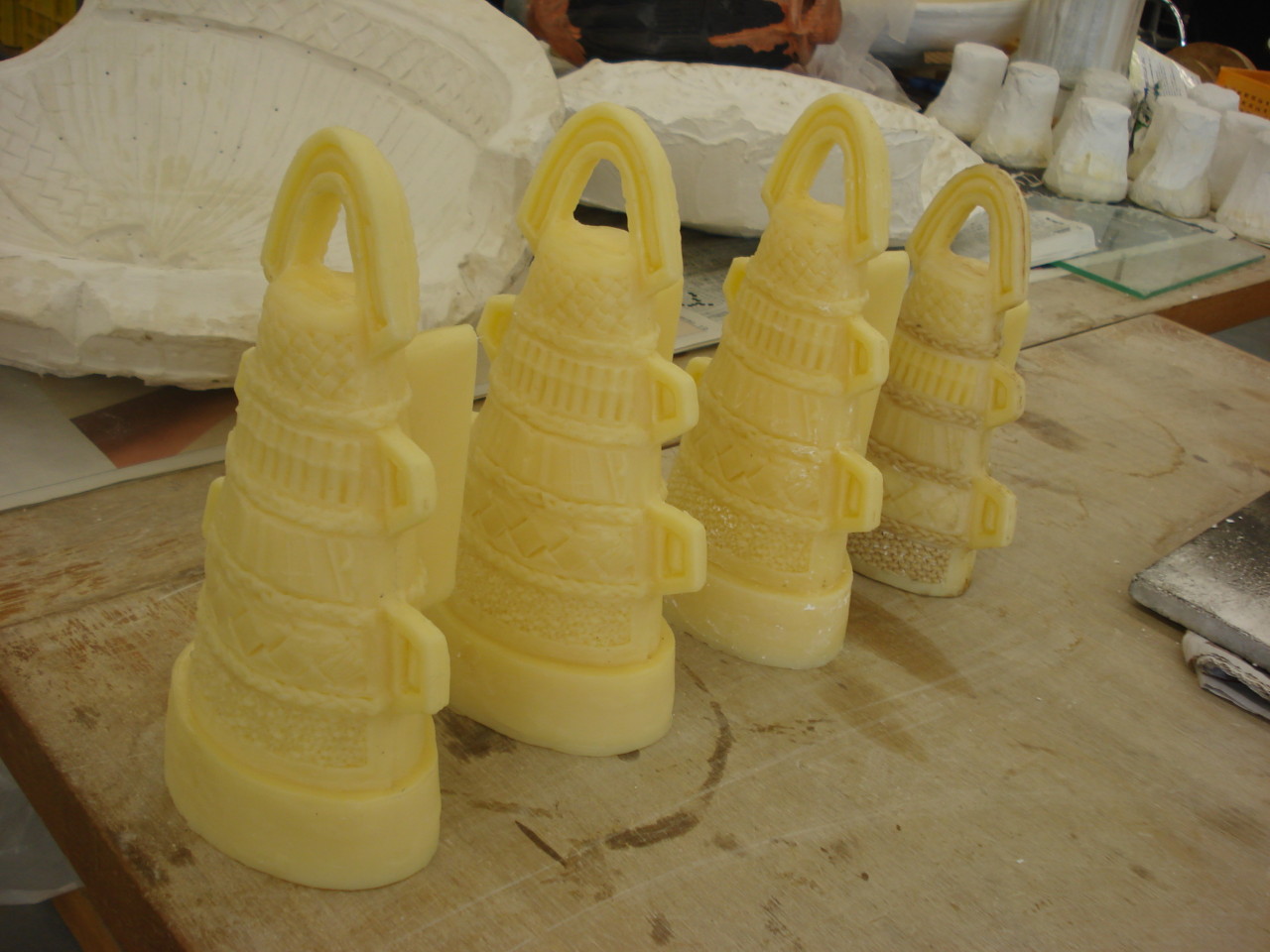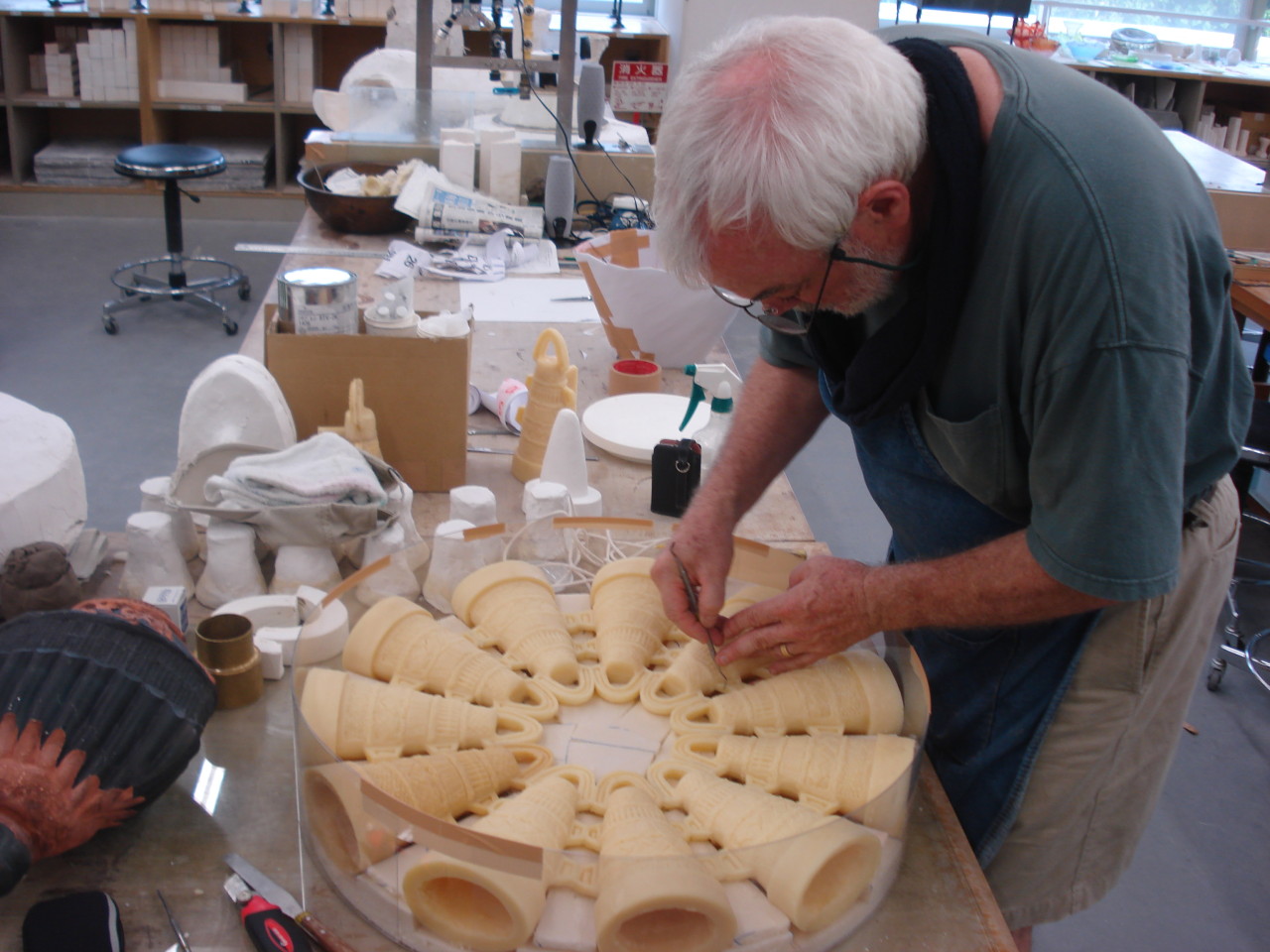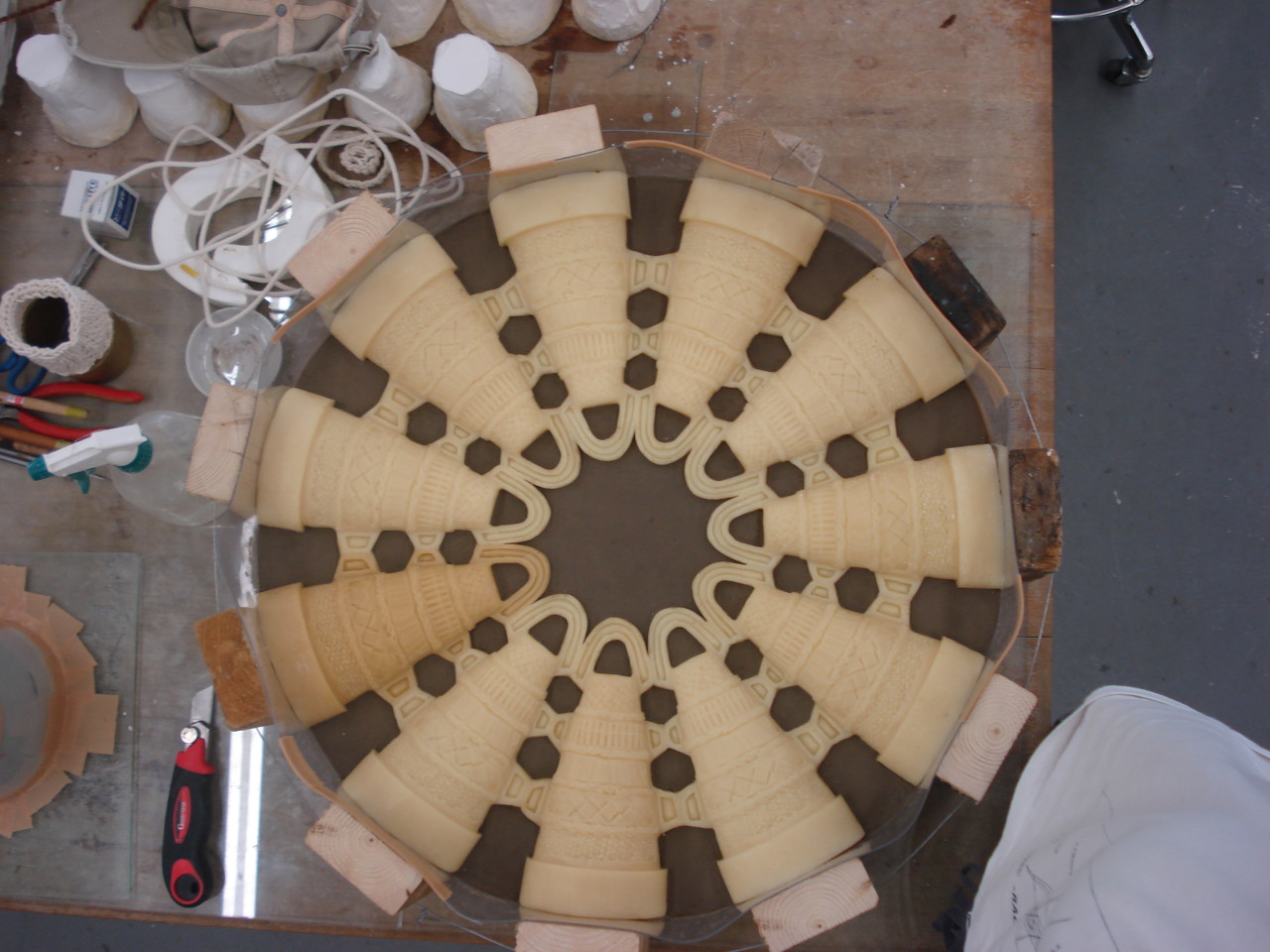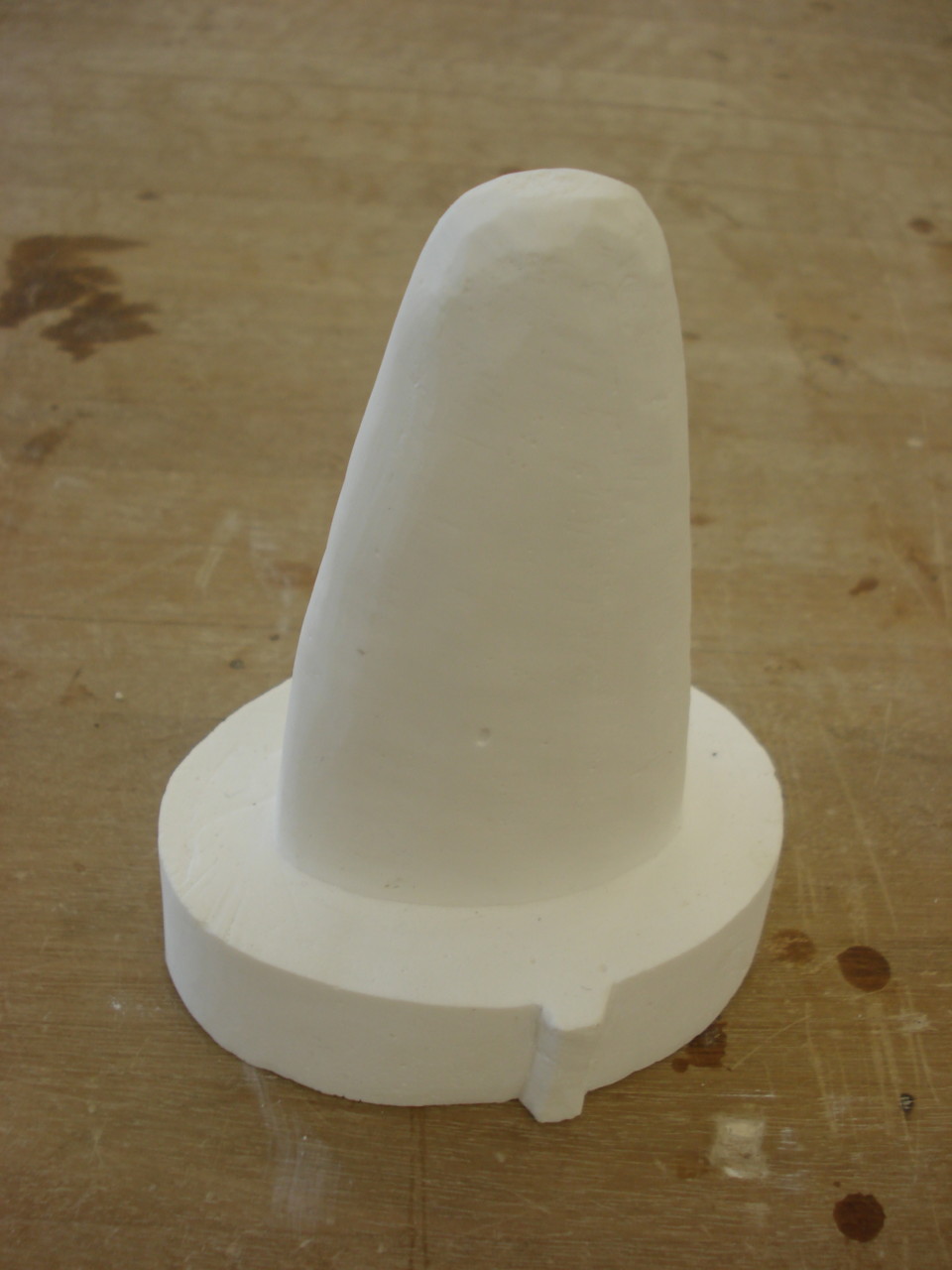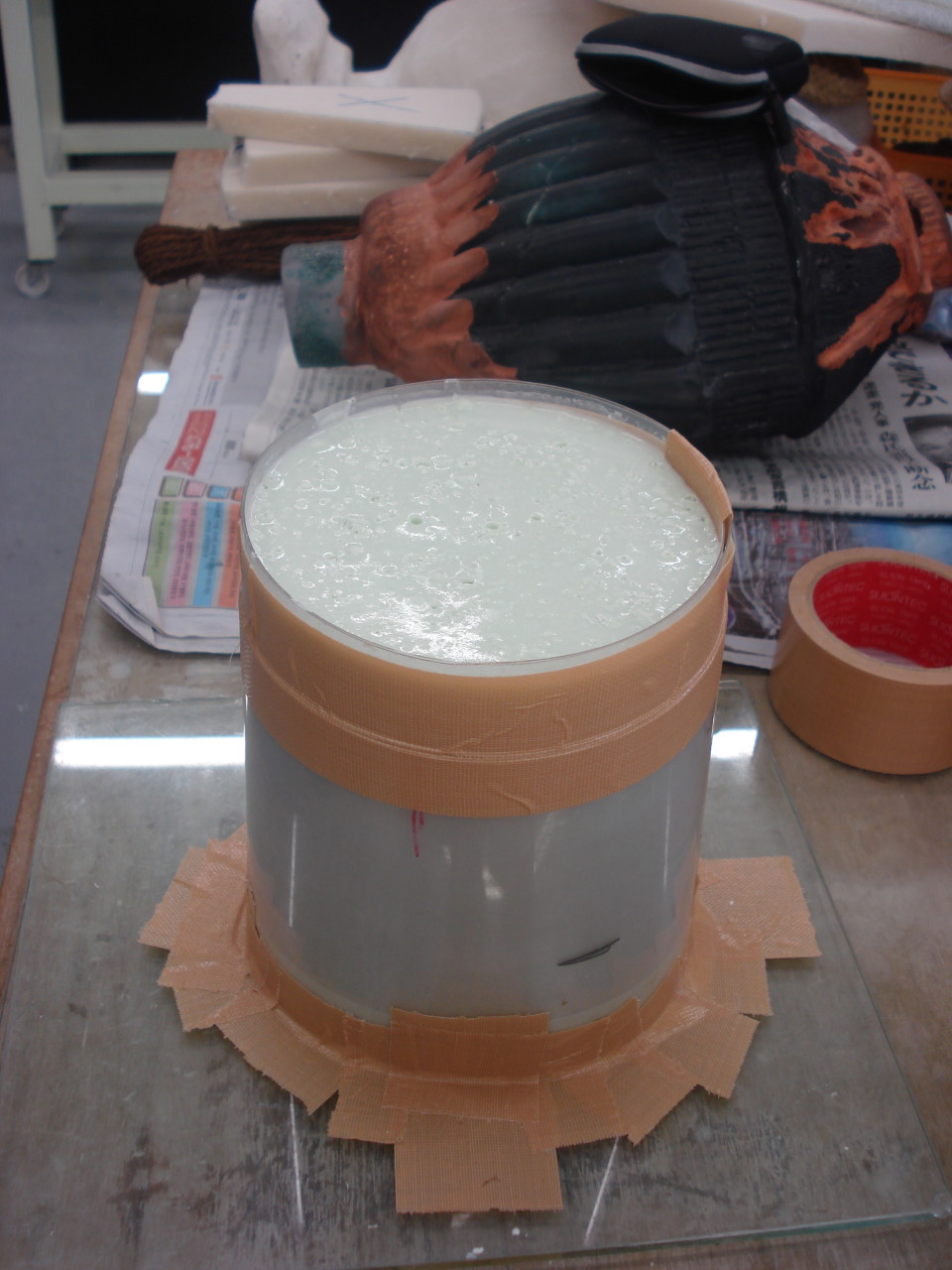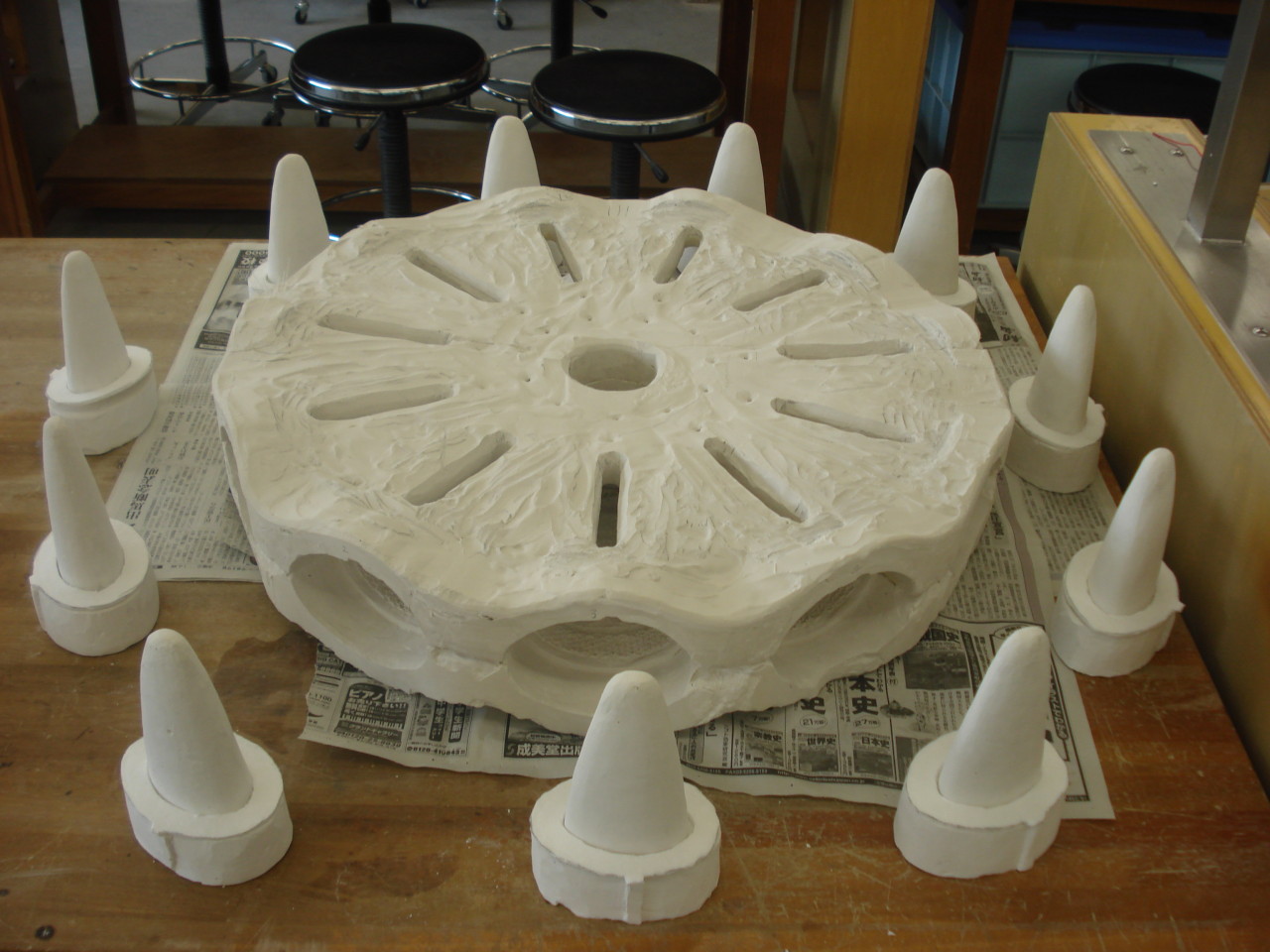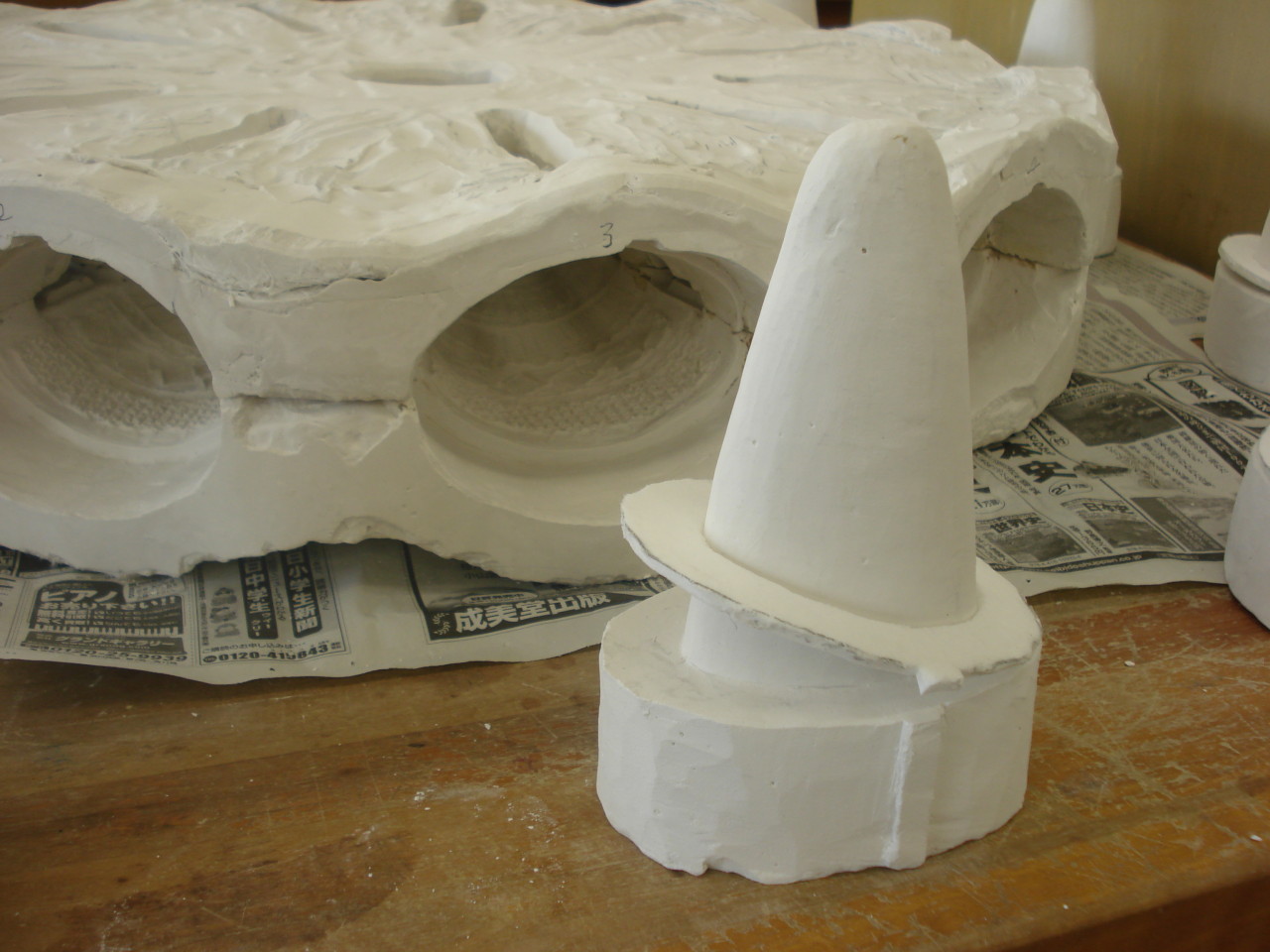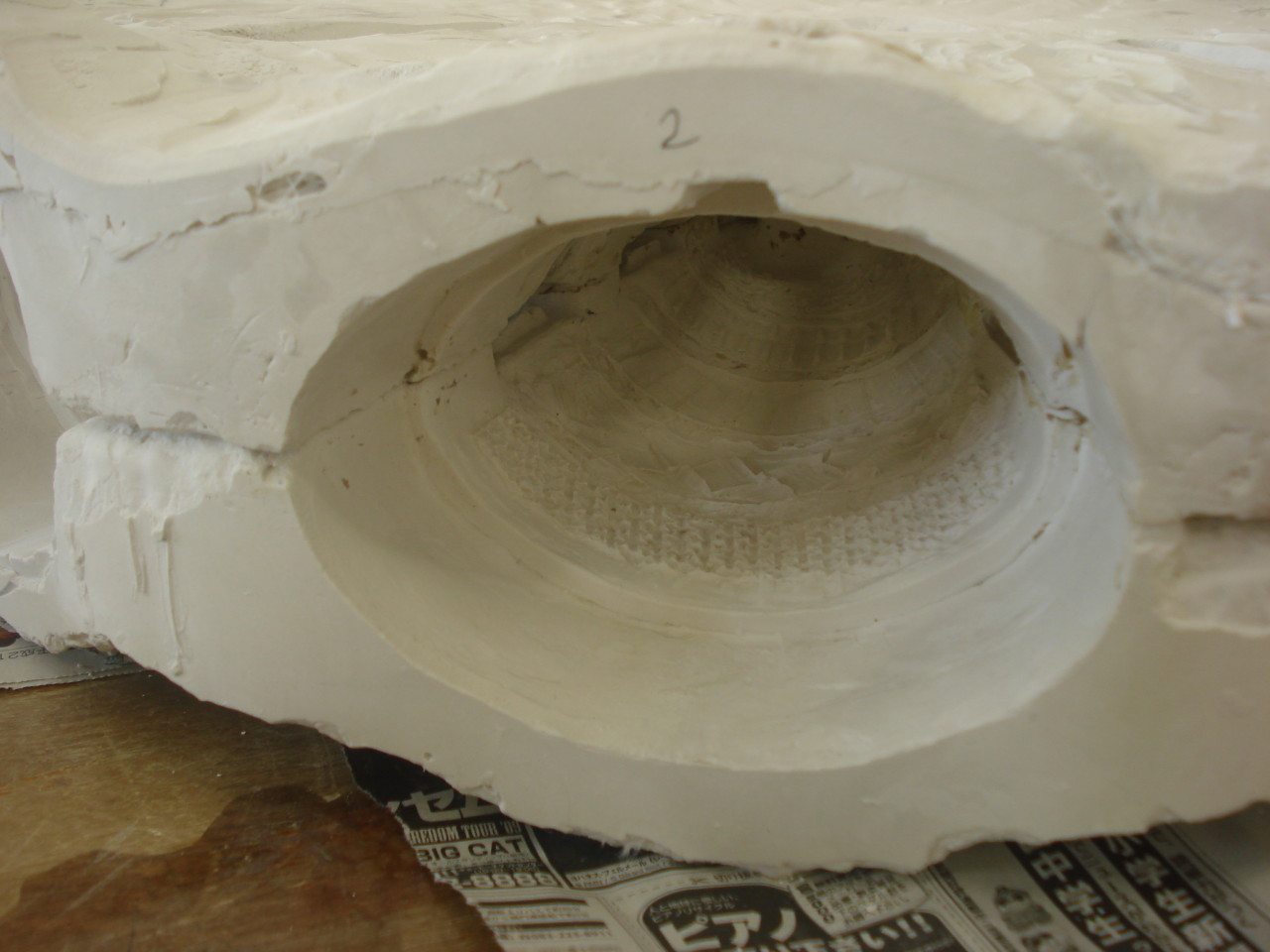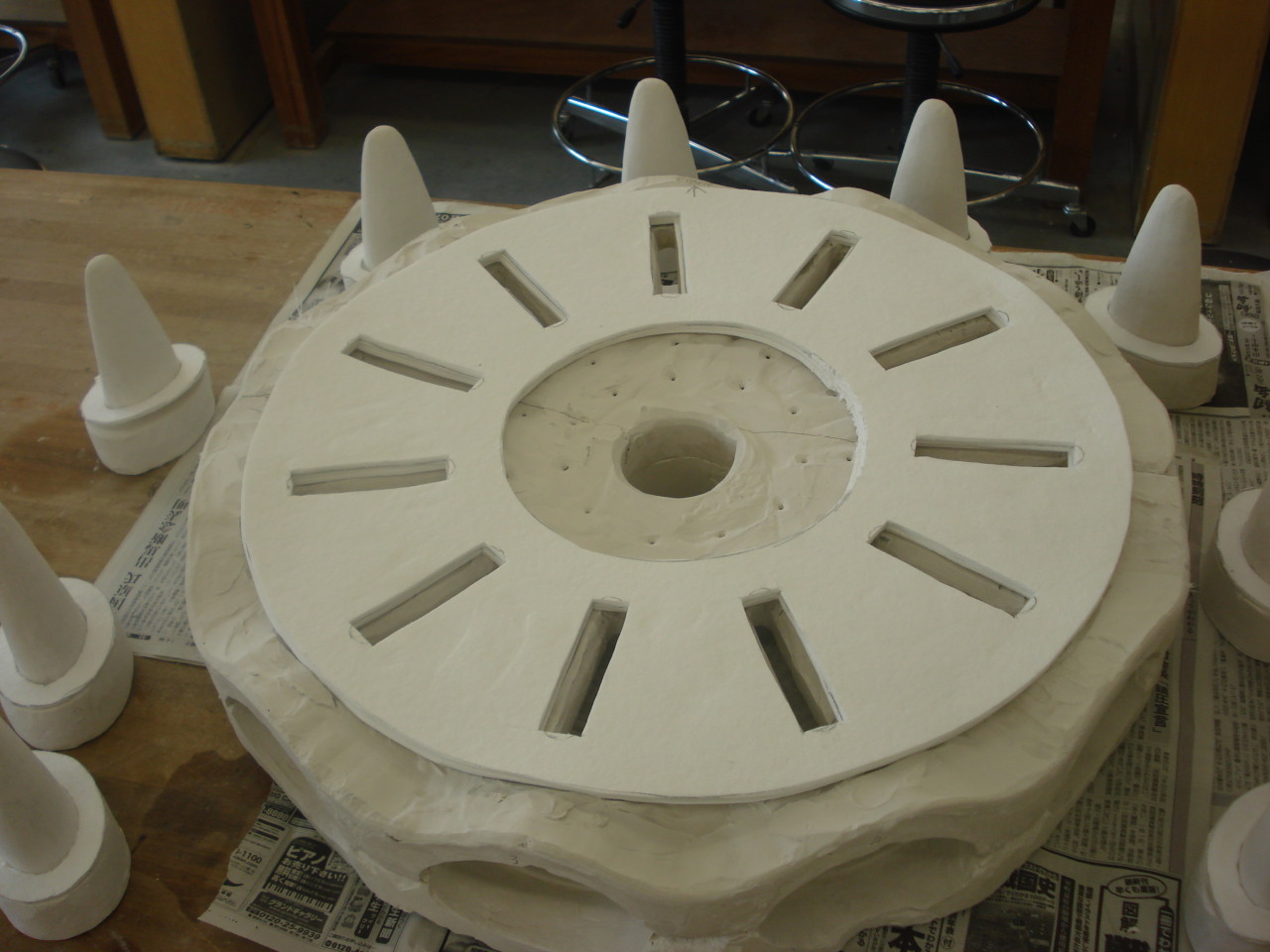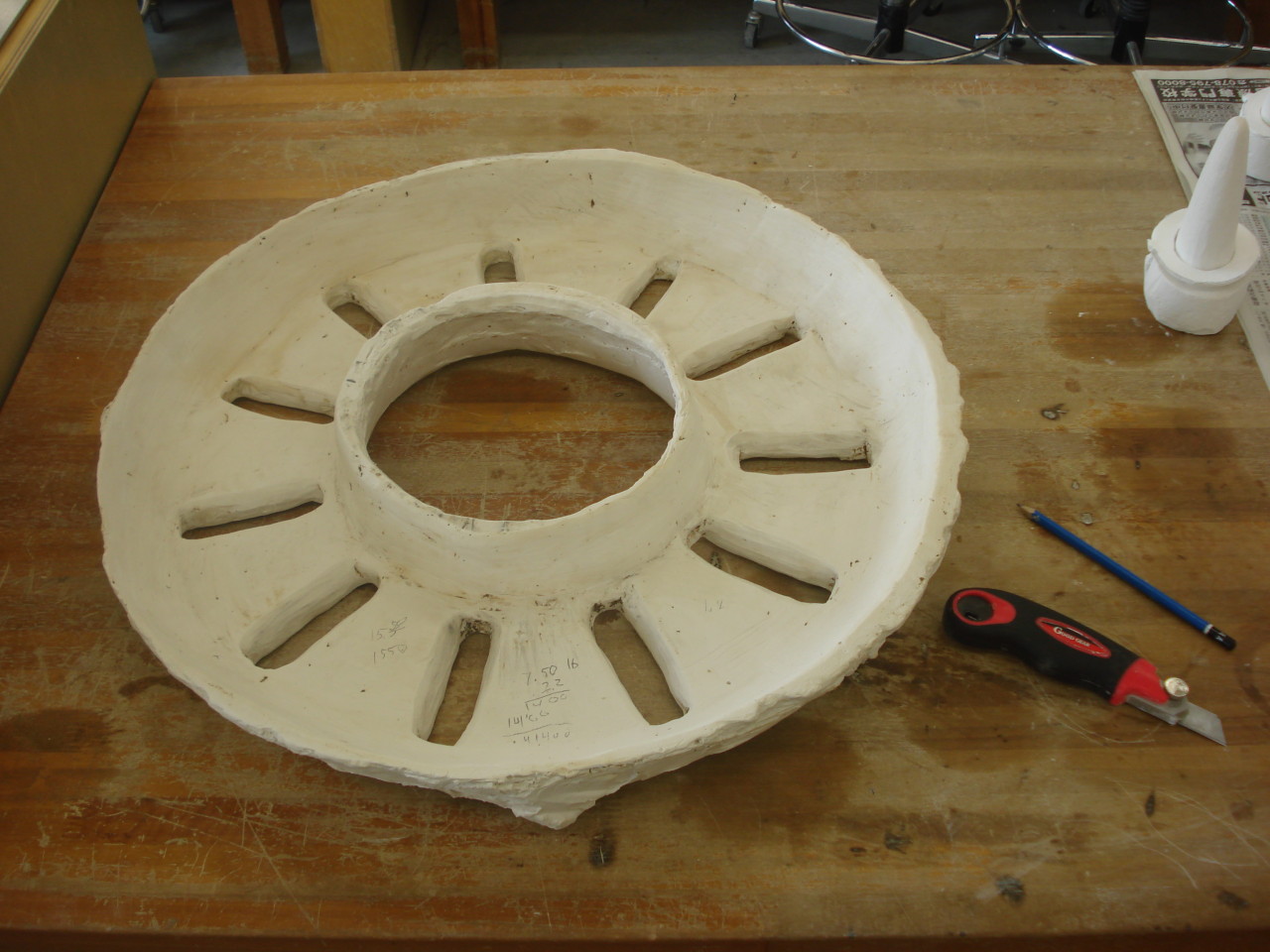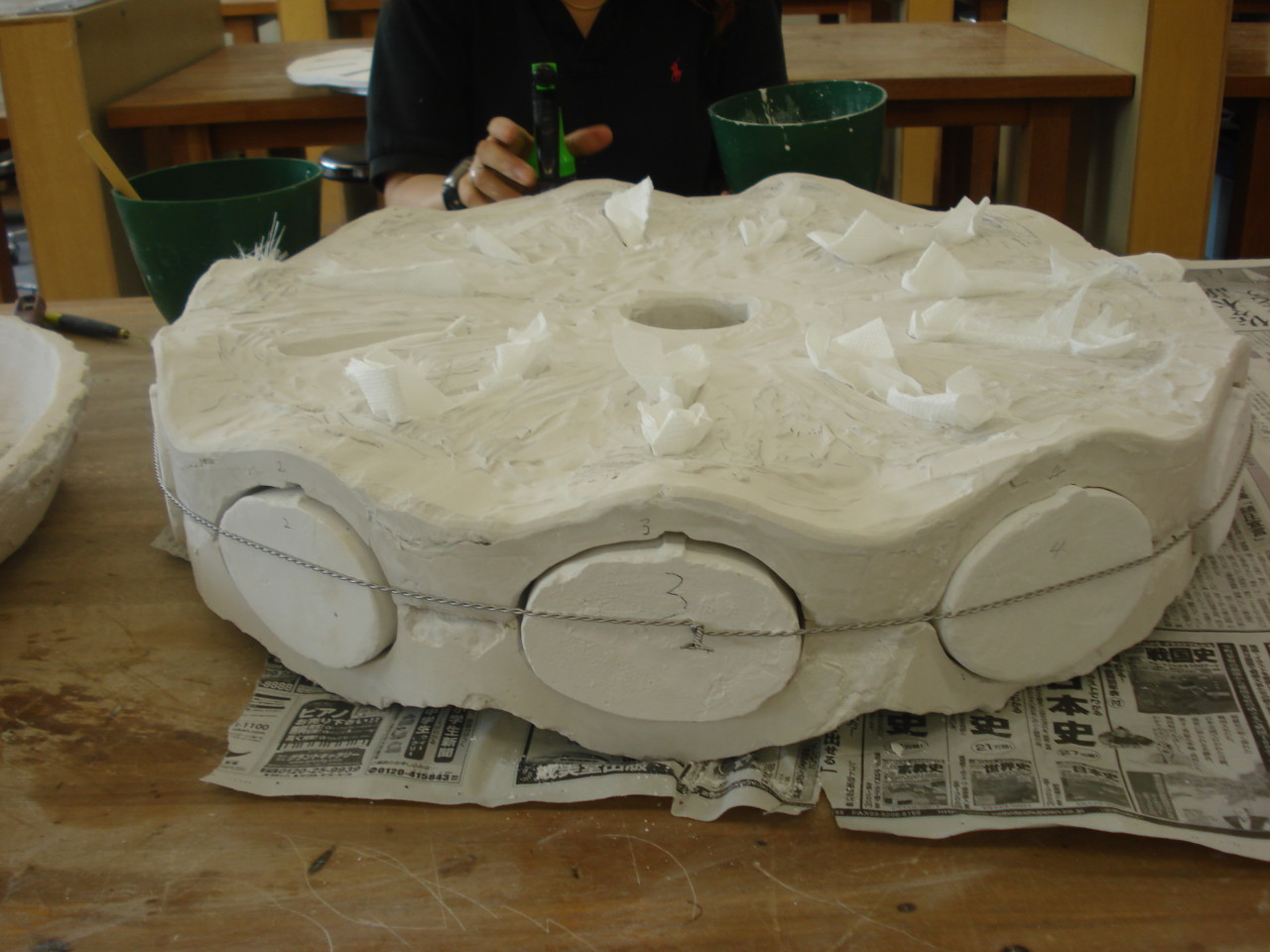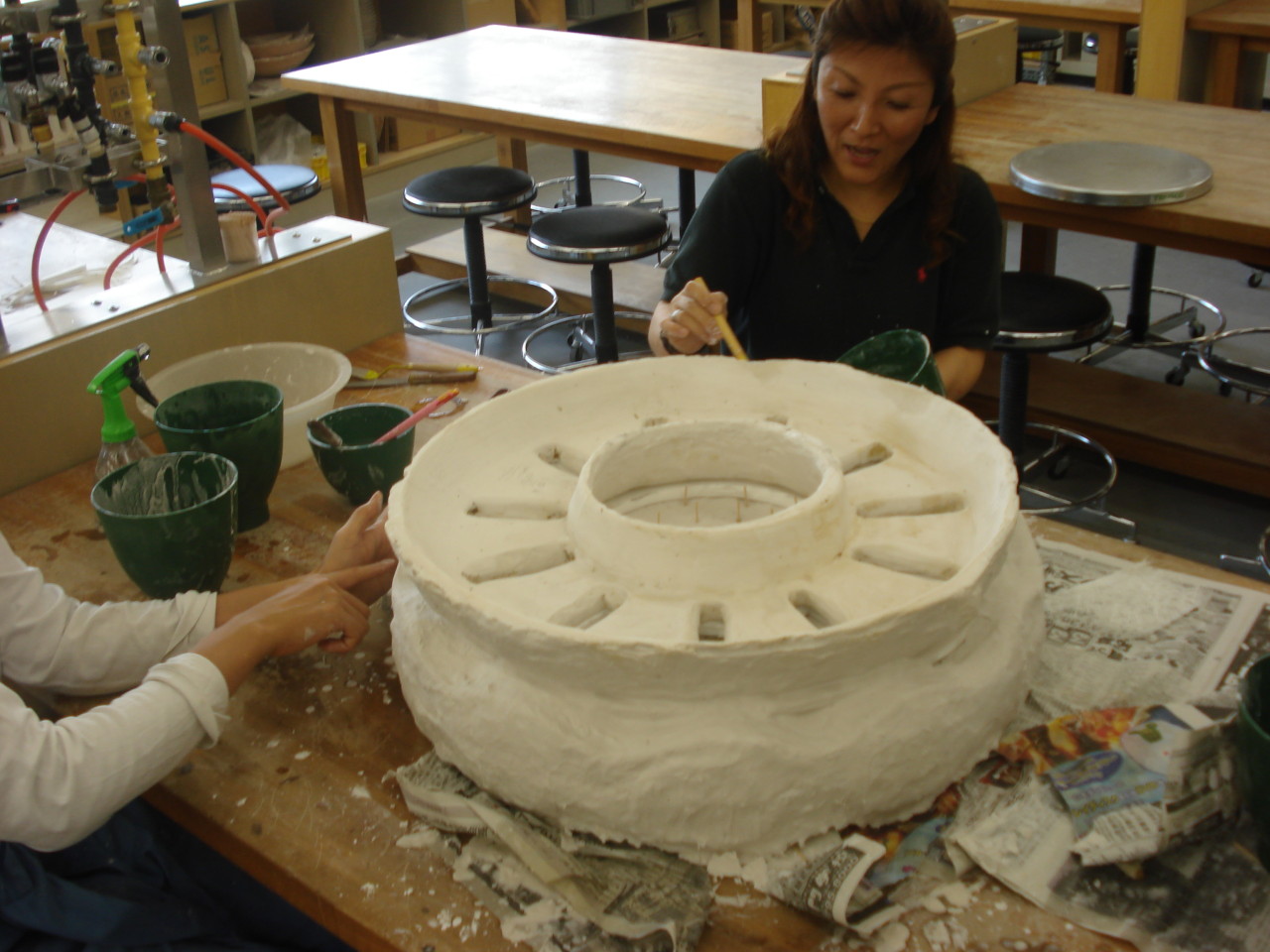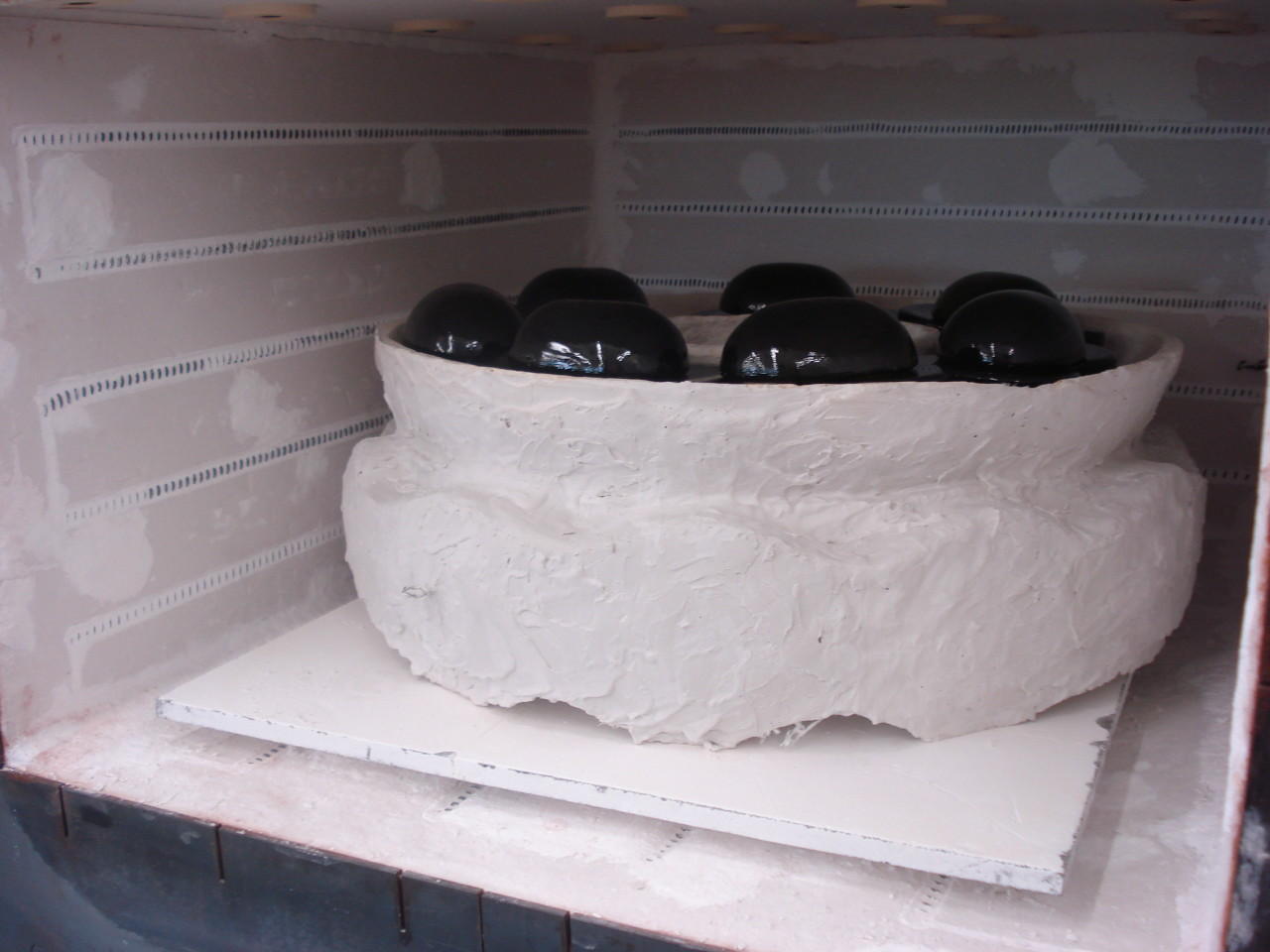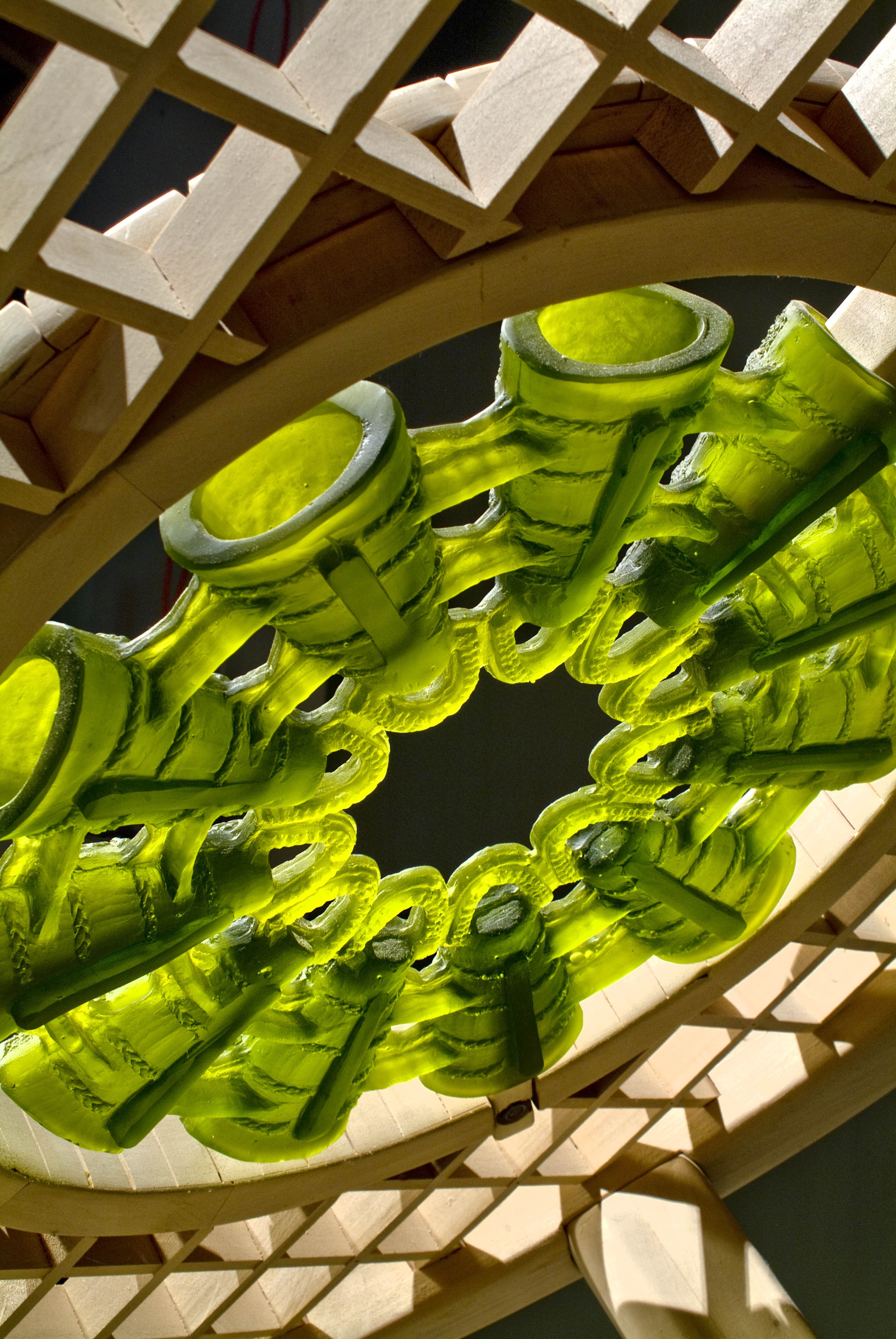Making Dotaku
Dotaku is a piece that took many, many months to make. In 2009 I was teaching at the Osaka University of Art with my two good friends Professor Hiroshi Yamano and Professor Yuki Uchimura. Yuki and I were teaching a casting class. I had been researching ancient Japanese bronze bell-shaped objects (dotaku means copper or bronze bell) and I made my own version in wax with help from my daughter who was visiting me in Japan. When I discovered that 11 of these wax shapes formed an almost perfect circle, I asked Yuki if she would help me try to cast the entire circle as a single glass object. When she finished laughing, she said “why not?”
In the photos, you can see how the circle was imbedded in clay up to the center line and by sealing the outside circumference of the wax model with a flexible piece of clear plastic, a two part plaster mold was made of each half of the outside of the “wheel shape”. I then made a clay model of a core with a flange that would allow us to key it into the center of each bell shape, which would make that shape cast hollow. Eleven separate plaster cores were cast in an alginate mold and they were then fitted into the two-part mold, sealed with fiber-paper gaskets, and held in place by wrapping stainless steel wire around the circumference of the mold. Yuki taught me that by twisting two pieces of wire using an electric drill, the issue of thermal expansion of the wire during firing was minimized.
Each of the bell shapes had a rectangular sprue on one side to create an individual channel thru which the glass could flow. I had to make a cardboard template and match these holes precisely on the clay half-donut shaped model I made to cast a separate plaster reservoir. We used more fiber-paper to make a gasket and once we had lined up the 11 openings in the reservoir with the holes in the top of the mold we “cemented” the reservoir to the mold with more wet plaster and shredded fiberglass reinforcing. The 13 (14 if you count the reservoir) piece mold was loaded in a kiln and I used about 30 pounds of Gaffer lead crystal casting billet to fill the reservoir.
The piece was in the kiln for a week and once I had removed the mold and done minimal cold working, I had two days left in Japan. I shipped the piece in a foam-lined cardboard box to my studio in California via Japanese and U.S. mail, and miracle of miracles, it arrived intact.
I did all of the wood working for Dotaku myself, and it would take too long to explain. I’ll just mention that it is made from basswood and it took much longer to do the woodworking than it did to make the glass. Thank you Yuki, this was an experience I’ll never forget!
